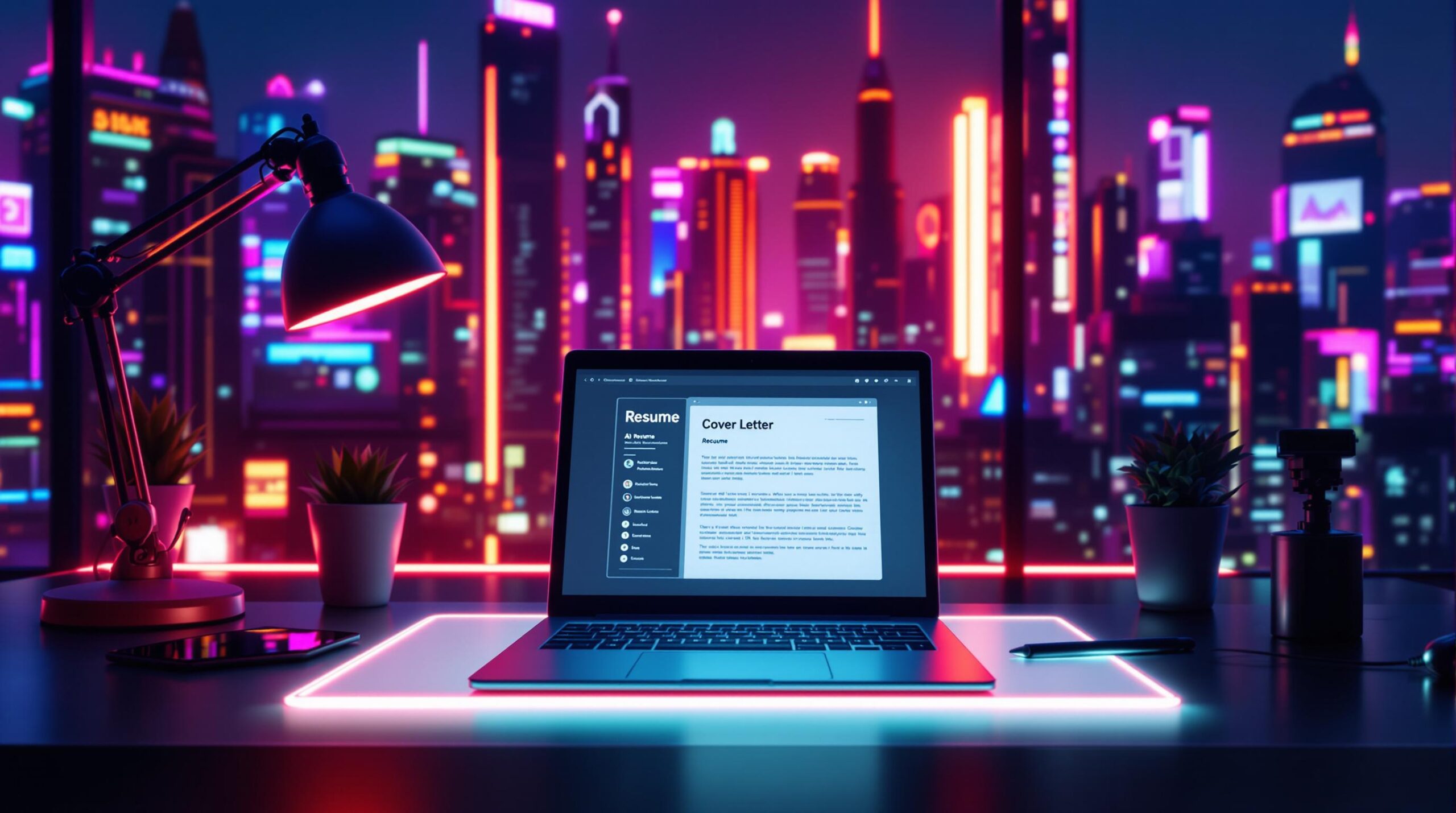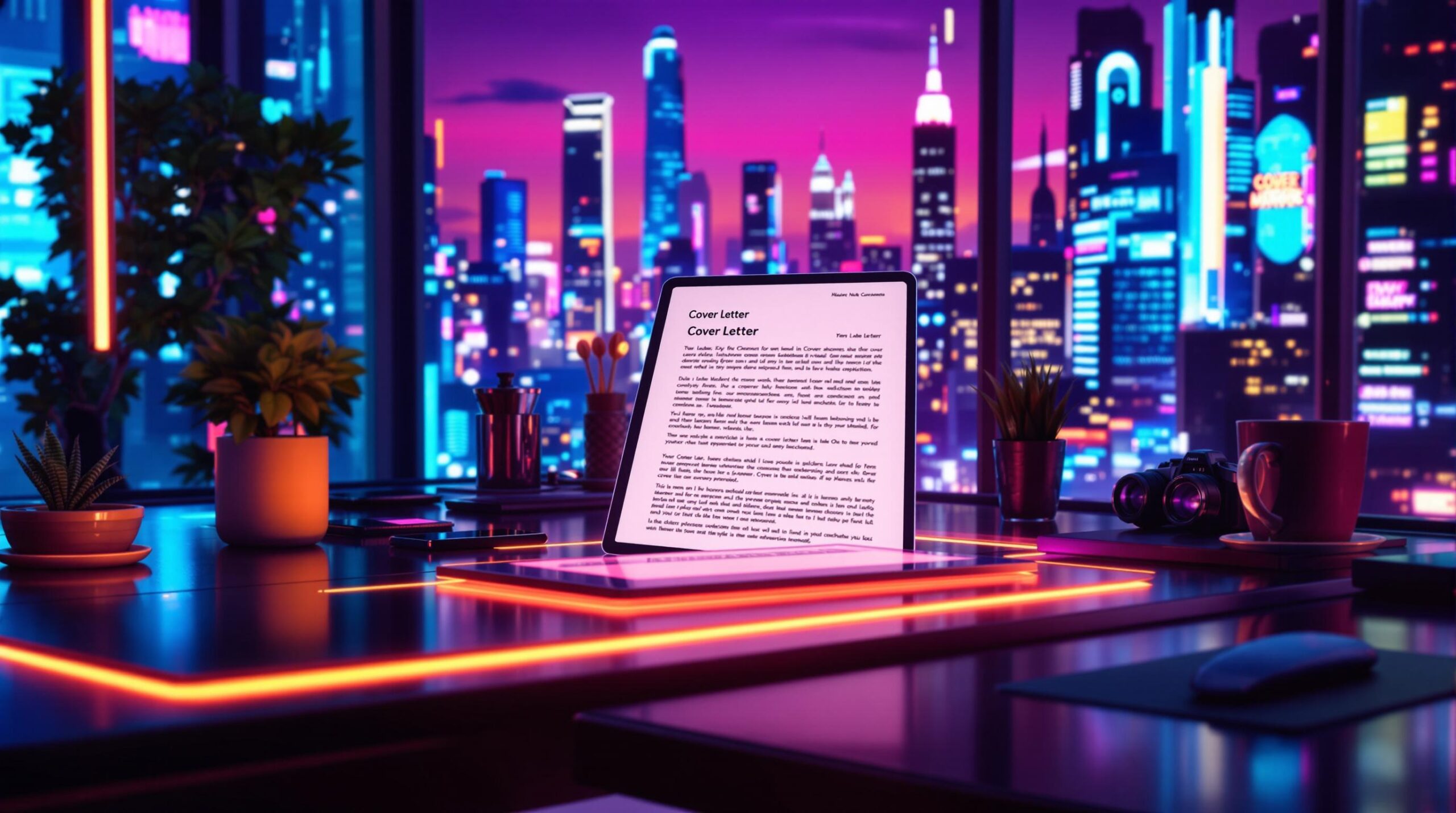In 2025, writing a cover letter that stands out is still essential for job applications. While AI and digital tools dominate hiring, a personalized cover letter helps you show your human side and connect your skills to a company’s needs. Here’s a quick guide:
- Why It Matters: 83% of hiring managers value cover letters, and 58% prefer personalized ones.
-
Key Elements:
- Professional details (name, contact info)
- Greeting (addressing the hiring manager by name)
- Introduction (state the role and your enthusiasm)
- Body (highlight achievements and align with the job)
- Closing (call to action and thank you)
- Avoid Mistakes: Don’t use generic content, misaligned achievements, or poor formatting.
- How to Customize: Research the company, use relevant keywords, and quantify your accomplishments with metrics (e.g., “boosted sales by 20%”).
Examples for roles like software engineers, nurses, and marketers show how to tailor your letter effectively. Tools like Dovira AI and Grammarly can help refine and optimize your draft. A strong cover letter can make a real difference in landing your next role.
Key Elements of an Effective Cover Letter
What is a Cover Letter and Its Role?
A cover letter serves as your personal introduction to potential employers, complementing your resume. In 2025, with AI-driven hiring tools playing a prominent role, crafting a well-thought-out cover letter is more important than ever. It’s your chance to stand out in a sea of applications and create a personal connection with hiring managers.
Parts of a Cover Letter
A strong cover letter is made up of several key sections, each with a specific purpose:
| Section | Purpose | Key Elements |
|---|---|---|
| Professional Details | Identify yourself | Full name, contact info, LinkedIn profile |
| Greeting | Build rapport | Address hiring manager by name or mention the department |
| Introduction | Grab attention | State the position, how you heard about it, and your enthusiasm |
| Body Paragraphs | Showcase fit | Highlight achievements and align your skills with the role |
| Call to Action | Outline next steps | Request a meeting or mention a follow-up plan |
For instance, a software engineer might emphasize a successful project in the body, while a nurse could focus on patient care improvements.
Mistakes to Avoid in Cover Letters
Steering clear of these common errors can improve your chances:
- Generic Content: Customize your tone and content to reflect the company’s culture. Every paragraph should connect directly to the job you’re applying for.
- Content Misalignment: Focus on achievements that are most relevant to the role, ensuring your cover letter complements your resume rather than repeating it.
- Poor Presentation: Use a standard business letter format with consistent styling. Keep paragraphs short and ensure your application looks polished.
Research shows hiring managers value cover letters that demonstrate genuine interest and a clear understanding of their organization’s goals [1][5]. By keeping these elements in mind, you can craft a cover letter that’s tailored to the role you’re aiming for.
How to Write a Customized Cover Letter
Researching the Company and Job
Writing an effective cover letter starts with understanding the company and the role you’re applying for. Dive into the company’s website, check out their social media channels, and look for recent news about them. Focus on their mission, values, recent achievements, and any projects they’re currently working on.
To align your qualifications with the job requirements, try using a simple table:
| Job Requirement | Your Experience | How to Highlight It |
|---|---|---|
| Technical Skills | List relevant certifications or tools | Reference projects where you applied these skills |
| Soft Skills | Share examples of these abilities | Explain the impact of these skills in past roles |
| Industry Knowledge | Highlight past experience and results | Show how this experience applies to the role |
This step helps you tailor your cover letter to the specific needs of the company.
Organizing Your Cover Letter
A well-structured cover letter should present a clear and engaging narrative about your career. Start with a strong opening that shows your enthusiasm for the role and your understanding of the company. For instance, if applying to a healthcare organization, you could mention their recent advancements in patient care or technology upgrades.
Here’s how to structure your cover letter:
1. Opening Paragraph
Start with an engaging statement that highlights your excitement about the role and company.
2. Body Paragraphs
Focus on 2-3 key accomplishments that align with the job requirements. Be specific. Instead of saying “improved team productivity”, try “introduced a new workflow system that boosted team productivity by 35% in six months.”
3. Closing Paragraph
Reaffirm your interest in the role and the company. Include a clear call to action, such as your availability for an interview, and thank the reader for their time.
By following this structure, you’ll create a cover letter that flows naturally and keeps the reader’s attention.
Highlighting Skills and Achievements
To showcase your achievements effectively, use the STAR method: Situation, Task, Action, Result. This approach gives context to your accomplishments and emphasizes their impact.
Whenever possible, include measurable results. For example:
“As a Digital Marketing Specialist at TechCorp, I developed and implemented a social media strategy that boosted engagement by 150% and generated 45% more qualified leads within three months” [2][6].
Here are some tips to make your achievements stand out:
- Start sentences with strong action verbs.
- Use metrics and timeframes to show results.
- Tie your past experiences to the specific requirements of the role.
- Show how your skills can contribute to the company’s goals.
For technical positions, highlight the tools and technologies you’ve mastered. For leadership roles, focus on team accomplishments and management experience. For creative jobs, emphasize your problem-solving skills and their impact on business outcomes.
Keep your tone professional but approachable. Avoid heavy industry jargon unless it’s relevant to the role. Your goal is to create a clear, engaging story that shows why you’re the best fit for the job.
Related video from YouTube
sbb-itb-00a787f
Examples of Customized Cover Letters for Different Roles in 2025
Now that we’ve discussed the structure and strategies for writing a cover letter, let’s dive into examples tailored for specific roles across various industries in 2025.
Tech Industry: Software Engineer Example
Dear Ms. Thompson,
As an experienced software engineer specializing in scalable applications, I’m eager to contribute to CloudTech Solutions’ AI-powered cloud infrastructure projects.
At DevStream Inc., I spearheaded the development of a microservices architecture that cut system latency by 40% and improved deployment efficiency by 65%. Working in an agile environment, I consistently delivered features ahead of sprint deadlines.
Some key accomplishments include building a payment gateway that processed $50M in transactions with 99.99% uptime, optimizing data pipelines to reduce processing time by 75%, and implementing CI/CD processes that slashed deployment times from 2 hours to just 15 minutes.
I’m excited about the opportunity to bring these skills to CloudTech’s cloud migration initiatives.
Best regards,
Michael Chen
This example ties technical achievements directly to the company’s goals.
Healthcare Industry: Registered Nurse Example
Dear Dr. Roberts,
I am applying for the Senior Registered Nurse position at Memorial Healthcare Center. As an RN with six years of emergency care experience and current BLS and ACLS certifications, I admire your hospital’s adoption of advanced patient monitoring systems.
At City General Hospital, I oversee a team of five nurses, maintaining a 98% patient satisfaction rate while managing 75 daily cases. My expertise includes:
- Critical care response and management
- Proficiency in Epic electronic health record systems
- Patient education and family communication
- Mentorship and training for new nurses
I also developed a triage protocol that reduced wait times by 35%, ensuring high-quality care. I look forward to applying these skills to support Memorial Healthcare’s initiatives.
Sincerely,
Sarah Martinez, RN, BSN
This example emphasizes leadership and patient care skills in a healthcare setting.
Marketing Industry: Digital Marketing Specialist Example
Dear Mr. Anderson,
I’m excited to apply for the Digital Marketing Specialist role at Growth Marketing Partners. Your sustainable brand campaign caught my attention, and I’m eager to bring my expertise in data-driven marketing to your team.
At Digital Pulse Agency, I used AI-powered Google Ads, viral social media campaigns, and A/B-tested email marketing strategies to lower CPA by 45%, generate over 2 million views, and double email open rates to 32%.
With proficiency in Google Analytics 4 and Adobe Creative Suite, I recently completed an Advanced Digital Marketing certification from Google to stay ahead of industry trends.
Best regards,
Rachel Wong
This example combines data-backed results with creativity to stand out in marketing roles.
These examples illustrate how to craft a cover letter that aligns your skills and experiences with the specific needs of the role. Use them as a guide to refine your own approach and make an impact. Modern AI-powered tools can also help simplify and enhance the writing process.
Using Technology to Improve Your Cover Letter
In 2025’s highly competitive job market, AI-powered tools have become key for creating effective cover letters. After drafting a solid version, these tools can fine-tune your cover letter, ensuring accuracy and compatibility with modern hiring systems.
Dovira AI: AI-Powered Cover Letter Builder
Dovira AI uses advanced algorithms to match your cover letter to job descriptions and improve its effectiveness. Here’s what it offers:
- Instant Feedback: Suggests ways to boost your cover letter’s impact and ensure it works well with applicant tracking systems.
- Smart Keyword Integration: Adds relevant industry terms and skills directly from job descriptions.
- Application Management: Keeps track of your job applications and organizes follow-ups.
| Feature | Basic Plan ($0) | Premium Plan ($5.99/week) |
|---|---|---|
| AI-Generated Cover Letters | Up to 3 applications | Unlimited |
| Advanced Keyword Integration | Basic | Advanced |
| Application Tracking | Limited | Full access |
| Customization Options | Standard | Advanced |
Other Tools for Cover Letter Creation
A few additional tools can help refine your cover letter:
- Grammarly ($11.66/month for Premium): Checks grammar, adjusts tone, and suggests better vocabulary to polish your writing.
- Microsoft CoPilot: Enhances clarity and tone by offering alternative phrasing and ensuring a professional, consistent style.
According to Glassdoor, 58% of hiring managers believe cover letters play a role in their hiring decisions [1]. By using these tools, you can craft cover letters that are polished, personalized, and ready for both human and AI evaluation.
Final Steps for Your Cover Letter
Formatting for Professional Appeal
A clean and professional format makes your cover letter easy to read and compatible with applicant tracking systems (ATS). Stick to fonts like Arial, Calibri, or Times New Roman in sizes 10-11 points. Use 1-inch margins and set line spacing to 1.15 for a polished look that works for both human reviewers and ATS software.
Once your formatting is in place, focus on refining the content to ensure it’s polished and error-free.
Proofreading and Editing
Mistakes in your cover letter can seriously hurt your chances – research shows they’re a top reason hiring managers reject candidates [7]. Use this simple review process:
- First Pass: Read your letter out loud to catch awkward phrasing or errors, and rely on tools like Grammarly to spot grammar issues and refine the tone.
- Second Opinion: Ask a trusted colleague or mentor to review your letter for clarity and overall impact.
After editing, make sure your letter is perfectly tailored to the job you’re applying for.
Aligning with the Job Description
Customizing your cover letter to match the job description is key to grabbing the hiring manager’s attention. Try these tips to make your letter stand out:
- Highlight important keywords in the job description and weave them naturally into your text.
- Connect your accomplishments directly to the role’s needs. For instance: “Led a team of 8 developers to complete a $500,000 software implementation project ahead of schedule.”
- Double-check the job’s main requirements and confirm your letter addresses each one.
Conclusion: Creating a Standout Cover Letter
Crafting an effective cover letter takes a mix of precision and a personal touch. A well-tailored letter can play a key role in landing an interview, making it an important part of your job application. The best cover letters highlight your unique experiences, showcase your enthusiasm, and incorporate thoughtful use of technology.
Here are a few strategies to keep in mind:
- Research the company’s values and projects to show alignment.
- Use specific metrics to quantify your achievements.
- Combine a professional tone with a bit of personality.
In 2025, the most effective cover letters are concise, typically three to four well-structured paragraphs [3][4]. They should tell a clear story about your qualifications and how they meet the job’s requirements. While tools can help refine your writing, presenting your experiences authentically is what truly makes a difference.











